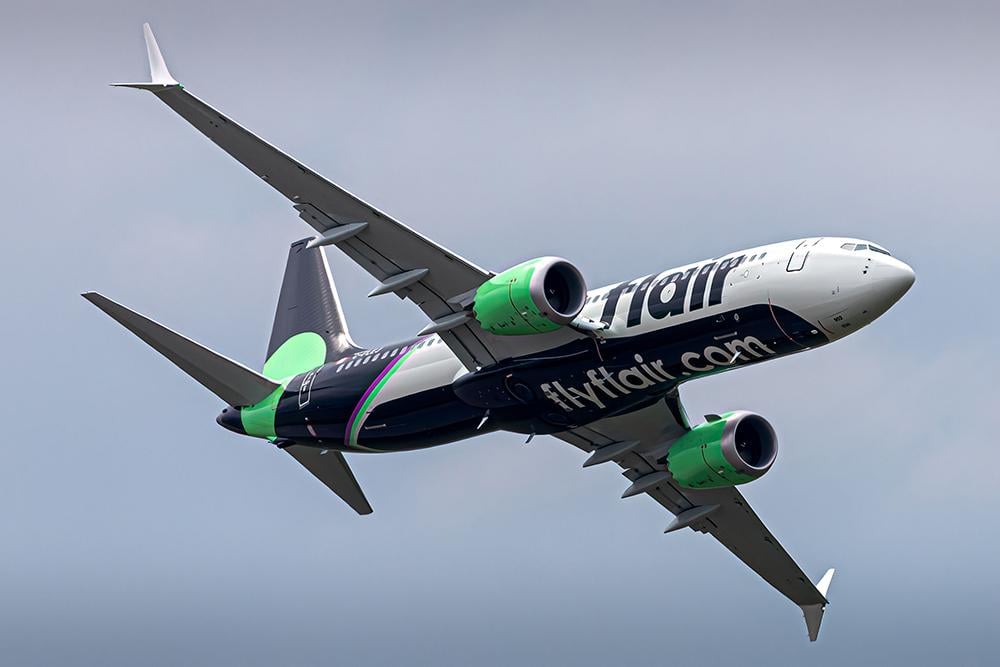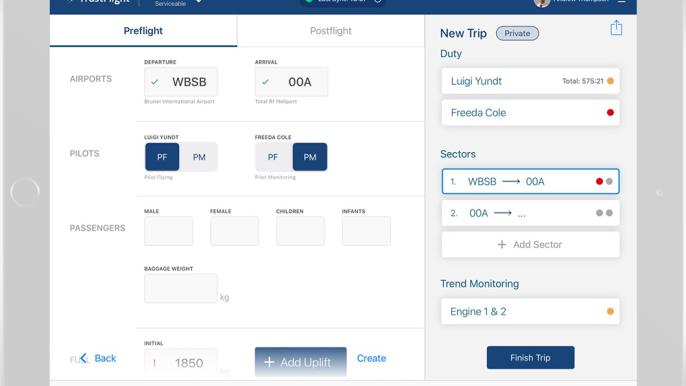
Canadian ultra-low-cost carrier (ULCC) Flair Airlines began growing its fleet last year with deliveries of its first Boeing 737MAX aircraft, but found that its digital support systems also needed an upgrade. VP of Maintenance Guy Borowski decided Flair needed a better MRO system and an electronic technical log (ETL) to digitally integrate pilots with the maintenance department and other parts of the airline.
“We made the decision last year and signed up with TrustFlight for services,” Borowski explains. “ETL was part of the service suite, and they also provide access to AMOS [MRO software].” Flair had previously been using another MRO IT system, but “as we grow, we needed to move to AMOS for a larger fleet,” he adds.
Borowski says there are quite a few benefits to deploying the ETL. “ULCCs need to keep costs low, and ETLs ensure accuracy in reading and writing. They have error proofing to catch wrong times,” he says. “And it is real-time data—you capture it immediately. It integrates with our other systems. Paper logs are inefficient, present many opportunities for unintentional errors, and they cost more.”

Borowski looked at a few other ETLs before choosing TrustFlight. He liked the simplicity of the app’s interfaces, its flexibility and its security protection. “It’s not just a PIN sign in; it’s more secure,” he says.
According to Borowski, TrustFlight interfaced well with other Flair systems, checked for errors and enhanced crew awareness of aircraft with deferred defects clearly shown with prompts.
Borowski says Flair is also happy with its new AMOS MRO system. “It has been good, very comprehensive [and] does many things. There is a learning curve, of course, but TrustFlight staff helped with that,” he says. Implementation of AMOS was rapid after the decision was made in June 2021.
TrustFlight’s ETL will be deployed this year. Flair must work with Canadian regulators to secure approval and then it will trial the ETL for a while in parallel with its traditional paper tech log. Borowski hopes it can all be accomplished by the end of 2022.
The major steps in implementation will be ensuring that everything works correctly, and that backup solutions are effective. TrustFlight will be installed on Flair pilots’ iPads and Borowski says the airline is implementing multiple backups to ensure the digital system is still robust if an iPad becomes unserviceable.
TrustFlight CEO Karl Steeves estimates digital ETLs save 7,000 pieces of paper per aircraft per year, in addition to all the other advantages of accuracy, timeliness, pilot convenience and efficiency. Yet only about 10% of airlines have installed ETLs.
Steeves attributes the slow penetration of ETLs to regulatory hurdles and cultural resistance. Flair’s ETL was recently validated by the European Union Aviation Safety Agency, which should ease regulatory hurdles. Startups like Flair are also less attached to old paper processes and more willing to go digital early in their lives.





